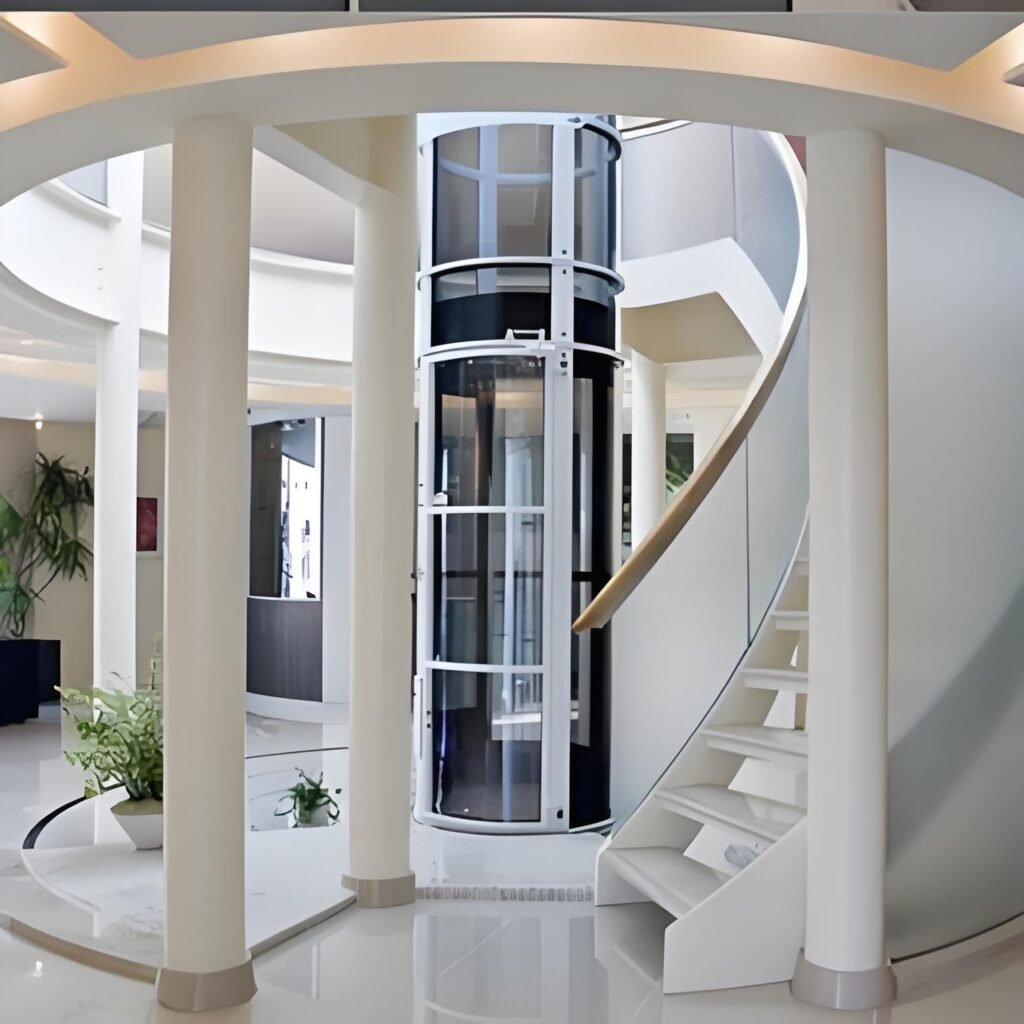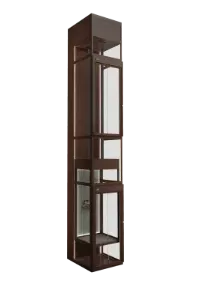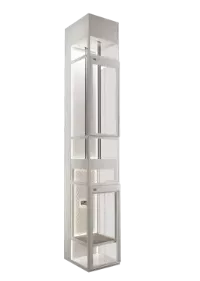Early home elevators were primarily hydraulic, especially in developed countries like Europe and the United States, where most villa owners installed a hydraulic home elevator.
A hydraulic elevator uses a hydraulic power source to pressurize oil into a cylinder, causing a plunger to move linearly, thereby moving the car directly or indirectly through a wire rope. A hydraulic elevator integrates mechanical, electrical, electronic, and hydraulic systems, consisting of the following relatively independent yet interconnected systems: a pumping station system, a hydraulic system, a guide system, a car, a door system, an electrical control system, and a safety protection system.

Advantages of Hydraulic Elevators:
High Safety: Hydraulic elevators are immune to overspeed and loss of control, making it easy for trapped people to self-rescue. They avoid the risk of hitting the top or bottom. As long as the mechanical structure is well designed and reliably installed, hydraulic elevators offer a high safety factor. Furthermore, hydraulic elevators can utilize a backup battery to provide a self-rescue function. In the event of a malfunction or power outage, if someone is trapped in the home elevator, simply press the emergency button in the car. The hydraulic oil, after opening the drain valve circuit, will slowly return to the tank, and the elevator will slowly descend under its own weight.
Low civil engineering requirements and high shaft utilization rate. The hydraulic Meiyuanbo villa elevator has low requirements for civil engineering structure. It does not require a machine room, but only a load-bearing wall. The top floor height can be installed as long as it is more than 2600 mm. The foundation pit can also be very shallow, with a pit as low as 100 mm.





